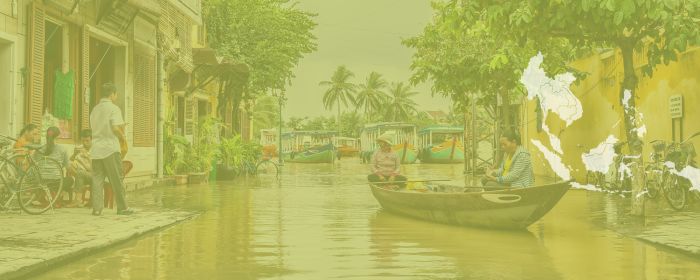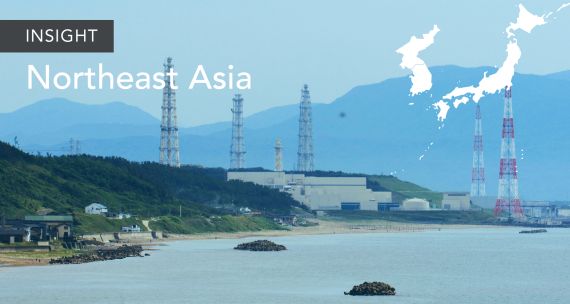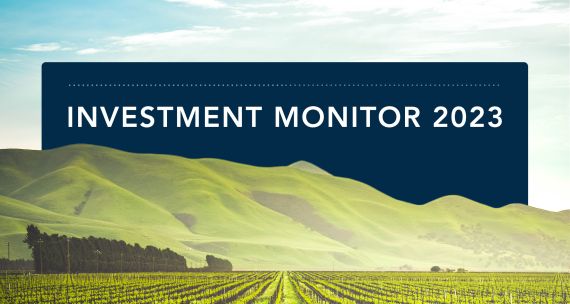The Takeaway
Ho Chi Minh City (HCMC), Vietnam’s most populous and rapidly growing coastal metropolis, has historically battled chronic urban flooding caused by high tides, heavy rainfall, and land subsidence. While the city’s “Master Plan for Flooding Prevention 2008–20” envisaged a multi-phased flood-control infrastructure project along the banks of Saigon and Dong Nai rivers, the plan’s first phase is nearly four years behind schedule due to financial and contractual issues. With the rainy season starting in May and lasting until November, HCMC residents and businesses must brace for yet another spell of severe flooding.
In Brief
Construction on phase one of the flood-control project began in 2016, with completion targeted for the end of 2019. The flood-control system, worth US$424 million (10 trillion Vietnamese dong), was meant to control water levels in the canals and improve the effectiveness of the drainage system over an area of 570 square kilometres along the bank of Saigon River and the HCMC central business district. The project includes six tide-controlling floodgates and a 7.8-km-long dike running north-south through HCMC’s urban and suburban districts.
The project halted in 2018 over contract and financing issues between HCMC authorities and Trung Nam BT 1547, the investor and builder of the project. Work was suspended between 2018–20 because Trung Nam ran out of capital, with the COVID-19 pandemic delaying progress further. In June 2020, Trung Nam’s contract expired and HCMC municipal authorities decided not to extend it. This led to the builder’s bank refusing to lend the remaining US$77.6 million (1.8 trillion Vietnamese dong) necessary to complete the project. The delay attracted the ire of the central government, which issued a 2021 resolution ordering HCMC to work with the central bank and the Bank for Investment and Development of Vietnam to complete the project and cut down on “irrational expenses.” The cost of the various delays is estimated to exceed C$30 million (500 billion Vietnamese dong). Work on the project resumed in 2021 but has been sluggish.
Implications
HCMC’s flat topography and its proximity to the Mekong River Delta is both a blessing and a curse. While these features naturally empower both its agricultural and commercial sectors, HCMC is vulnerable to flooding due to river overflow from high tides, heavy rains during the rainy season, and storm surges from extreme weather events. Regular floods throughout the city cause traffic congestion, disruptions to daily business activities, and the chronic displacement of residents. With no respite from the slow-paced construction of flood-control projects, residents have resorted to raising their houses to higher levels from the road to cope with the floods.
Nearly 45 per cent of the city sits less than a metre above sea level. In fact, HCMC has been identified as a “sinking city”: studies show that the city's land is sinking at a rate of 1.6 centimetres per year due to population growth, urban development, and climate change. The Intergovernmental Panel on Climate Change, a UN-affiliated body of experts, estimated that by 2050, coastal cities and other parts of Vietnam will be underwater.
Another study estimated that with floods getting worse, infrastructure damage could amount to US$100–$400 million (2.3–9.3 trillion Vietnamese dong) and real estate losses could reach US$1.5 billion (34 trillion Vietnamese dong). Experts have opined that the city’s approach to flood mitigation needs to go beyond flood-control systems. Green spaces and bodies of water should be created within the city to absorb runoff and new developments on low-lying swamp land should be prohibited.
As Vietnam’s economic hub, HCMC has set an economic growth rate target of 7.5–8 per cent for 2023, with a special focus on attracting more foreign direct investment. Clearly, the city will need to accelerate its flood mitigation measures, improve urban planning, and plan for climate change adaptation to sustain its economic growth.
What’s Next
-
Regional planning for 2021-30 period, with a view to 2050
Cities in the Mekong Delta region are trying to make urban areas more resilient to climate change and to move urban growth in a more sustainable direction. Acutely aware of the danger posed by flooding, the Vietnamese government has promised to implement 16 projects worth C$5.4 billion (93 trillion Vietnamese dong) in the Mekong Delta region to alleviate the strain imposed by chronic flooding on HCMC. Authorities have proposed constructing a dike stretching over 23 km from Vung Tau to Go Cong's coast. But experts are concerned that the proposed dikes — acting only as only short-term solutions — could disrupt biodiversity and river ecosystems.
-
Regulating groundwater extraction
Due to the rapid expansion of the city, the water supply system is lagging, forcing many residents and businesses to extract groundwater while waiting for piped water. This over-extraction of groundwater can create underground cavities that may collapse, resulting in the sinking of the soil above. In December 2022, Vietnam’s current prime minister approved a plan for water resources from 2021-30. By 2025, the plan aims to increase clean water usage to 95-100 per cent for urban areas and 65 per cent for rural areas, regulate 90 per cent of water exploitation, and reduce water loss in supply to 10 per cent.
-
Produced by CAST’s Southeast Asia team: Stephanie Lee (Program Manager); Alberto Iskandar (Analyst); Saima Islam (Analyst); Tim Siao (Analyst).




